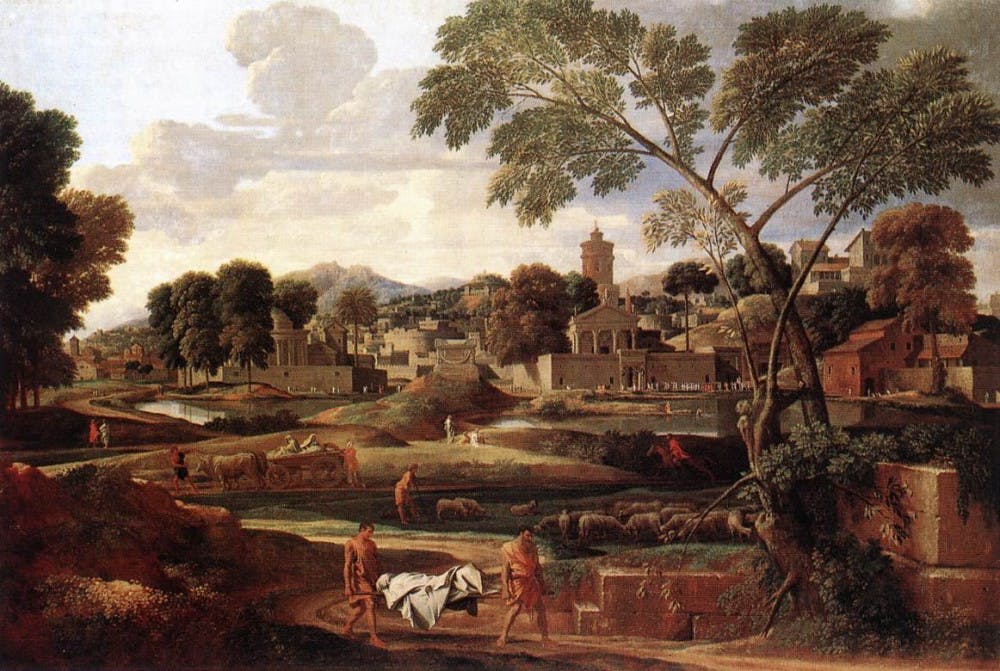Continuing on from my last post, we’ll finally wrap up the rest of Baroque. During the 17th century, England was having a pretty rough time. For the most part, England imported their painters. But now, for the first time, England was able to produce talented native artists. My ultimate favorite is Gainsborough. Gainsborough’s paintings have an informal feel to them. He loved nature and believed it to be worthy subject matter for art, so he incorporated natural landscapes as the backdrop for his portraitures. He mastered the elongation of the human form to make his figures look regal. He offset this regality with natural, casual poses and contemporary dress. This is seen in Gainsborough’s “Mrs. Richard Brinsley Sheridan.” He paints the woman among the landscape in such a natural and beautiful way. She is dressed informally, no aristocratic garb, and sits very naturally. There is no pomp and circumstance. She isn’t stylized to look like a goddess and there is certainly no usage of props. The English Baroque style is definitely characterized as a restrained elegance.
 "Mrs. Richard Brinsley Sheridan" by Gainsborough
"Mrs. Richard Brinsley Sheridan" by Gainsborough
Now we have the Spanish Baroque. The most famous Spanish Baroque artist is Diego Velazquez. Velazquez was so loved that he became King Philip IV’s royal court painter. Velazquez was a master in the visual realism. But, what set him apart from many of the other masters, was the way he painted. He used fluid brushstrokes. Velazquez created images with the usage of colors and light as opposed to lines, like many of his predecessors and contemporaries. He favored simplicity in his art; he always depicted the world. Velazquez always presented his subjects realistically with a sense of dignity and took away all the fussiness that is associated with court paintings. We see this in “Las Meninas.” Here, the princess is attended to by her ladies in waiting. She is in a completely natural state.
And finally, we have French Baroque. France was flourishing during the 17th century—arguably the most powerful and wealthiest century. This splendor gave rise to an equally splendid artist: Poussin. Poussin was a student of the classics. He studied the ancient Roman myths, history and Greek sculpture. He was so obsessed with the classics that he actually worked in Rome. Poussin painted in what he calls “la maniera magnifica," or "the grand manner." He believed that the subject matter that should be painted should be worthy of being immortalized. They must be grandiose narratives and subjects: epic battles, heroic deeds, and religious icons. “Everyday” things are too lowly and mundane. We see this with his “Burial of Phocion.” French Baroque is pompous and pretentious. It was all about order and ornament. Another great example of French Baroque is the famed Palace of Versailles.
You can reach the blogger at mmtran@asu.edu.







